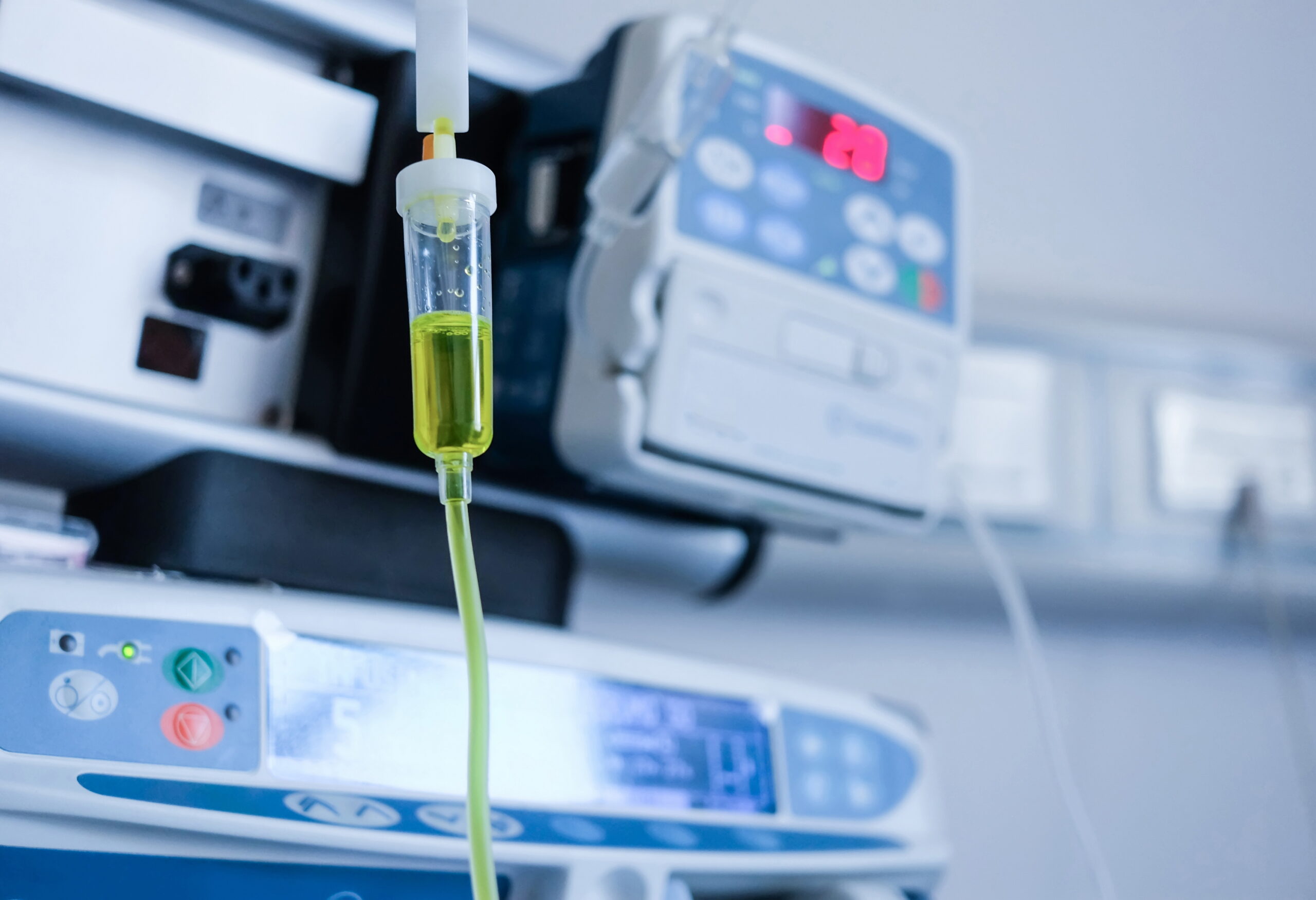
Dialysis is a medical procedure that has transformed the lives of millions of individuals dealing with kidney failure and related kidney conditions. This remarkable therapy plays a crucial role in maintaining the delicate balance of our internal environment when the natural filtration system of the kidneys is compromised. In this comprehensive blog, we will explore the different types of dialysis, unravel the intricate mechanics behind this life-saving process, delve into the step-by-step procedures, and shed light on potential side effects that patients may encounter along their journey to better kidney health. Whether you’re a patient, a caregiver, or simply curious about this remarkable medical marvel, join us in discovering the intricate world of dialysis and the remarkable impact it has on countless lives.
How Dialysis Works
Dialysis is a life-saving medical procedure that mimics the natural function of the kidneys when they are no longer able to perform their essential role in maintaining the body’s internal balance. It works by removing waste products and excess fluids from the blood, regulating electrolyte levels, and helping to control blood pressure. Let’s delve into the intricate details of how dialysis works:
Filtration Process
The primary goal of dialysis is to filter the blood, just as healthy kidneys do. It accomplishes this through two main types: hemodialysis and peritoneal dialysis.
Hemodialysis:
- Vascular Access: Before starting hemodialysis, a vascular access point is created, typically through a surgically joined artery and vein, known as an arteriovenous (AV) fistula or graft, or via a central venous catheter. This access point allows the blood to leave and return to the body during the procedure.
- Blood Circulation: During a hemodialysis session, the patient’s blood is slowly pumped out of their body and into a machine called a hemodialyzer or dialysis machine.
- Artificial Kidney: Inside the dialysis machine, the blood is filtered through a semi-permeable membrane that allows waste products and excess fluids to pass through. On the other side of the membrane, a special solution called dialysate is circulated. Dialysate helps maintain the electrolyte balance of the blood and facilitates the removal of waste.
- Clean Blood Return: After the filtration process, the clean blood is returned to the patient’s bloodstream. This entire process is continuously monitored to ensure it is safe and effective.
Peritoneal Dialysis:
- Catheter Placement: In peritoneal dialysis, a catheter is surgically inserted into the patient’s abdominal cavity.
- Dialysate Introduction: A special dialysate solution is introduced into the abdominal cavity through the catheter. This solution helps to draw waste products and excess fluids from the nearby blood vessels into the abdominal cavity.
- Dwell Time: The dialysate remains in the abdomen for a specified period (dwell time), during which it absorbs waste products.
- Drainage: After the dwell time, the used dialysate, along with the waste products it has absorbed, is drained from the abdomen into a collection bag.
- Cycling: Peritoneal dialysis typically involves multiple cycles of dialysate exchange throughout the day, making it suitable for home use.
Balancing Act:
Besides waste removal, dialysis also maintains the body’s fluid balance. This is essential in preventing conditions like oedema (swelling) and hypertension (high blood pressure). Furthermore, it regulates the levels of essential electrolytes, such as sodium, potassium, and calcium, in the blood.
Duration and Frequency:
- Hemodialysis sessions usually last around 3-4 hours and are typically required three times a week.
- Peritoneal dialysis is more flexible and can be done at home, allowing for multiple exchanges throughout the day.
Monitoring and Adjustments:
During the dialysis process, healthcare professionals continually monitor the patient’s vital signs and the dialysis machine to ensure that the procedure is safe and effective. Adjustments can be made to the dialysate composition or the duration of the procedure based on the patient’s needs.
Dr. Sumit Sharma is the best Urologist in Gurgaon for the procedure of dialysis.
Side Effects of Dialysis
Dialysis is a life-saving procedure for individuals with kidney failure, but like many medical treatments, it can come with a range of side effects and potential complications. It’s crucial for both patients and healthcare providers to be aware of these side effects to effectively manage and mitigate them. Below, we’ll delve into the common side effects and potential complications of dialysis:
Common Side Effects:
Hypotension (Low Blood Pressure): A drop in blood pressure during or after hemodialysis is a common side effect. This can lead to symptoms such as dizziness, nausea, and sometimes even fainting. Hypotension is often caused by the rapid removal of excess fluid during the treatment.
Muscle Cramps: Some patients experience muscle cramps, usually in the legs, during or after hemodialysis sessions. These cramps are often due to shifts in fluid and electrolyte levels during the procedure.
Nausea and Vomiting: Nausea is a common side effect, and vomiting can occur in some cases, particularly if the patient’s blood pressure drops significantly during dialysis.
Headaches: Patients might experience headaches during or after dialysis, often due to the rapid changes in blood pressure and fluid balance.
Itching and Skin Changes: Hemodialysis can sometimes lead to dry and itchy skin, which is often a result of changes in mineral and electrolyte levels, particularly phosphate.
Long-Term Complications:
Anaemia: Anemia, characterized by a deficiency of red blood cells, is common among dialysis patients. The kidneys play a crucial role in producing erythropoietin, a hormone that stimulates red blood cell production. Dialysis patients may require regular treatments with erythropoietin-stimulating agents to manage their anaemia.
Bone Disease: Kidney failure and dialysis can lead to bone disorders, including renal osteodystrophy. The imbalances of calcium and phosphorus can weaken bones, making them more prone to fractures.
Cardiovascular Issues: Dialysis patients are at higher risk of cardiovascular problems. Hypertension and heart disease are common complications due to fluid and electrolyte imbalances, anaemia, and other factors associated with kidney failure.
Infections: Patients on dialysis may have a weakened immune system, making them more susceptible to infections. Peritoneal dialysis patients, in particular, are at risk of peritonitis, an infection of the abdominal lining.
Catheter-Related Issues (Peritoneal Dialysis):
Infection: In peritoneal dialysis, the presence of a catheter can lead to infection. Peritonitis is a significant concern, as it can cause abdominal pain, fever, and cloudy dialysate effluent.
Catheter Blockage or Leakage: Catheter-related issues like blockage or leakage can disrupt peritoneal dialysis. This may require catheter repositioning or replacement.
Exit Site Infection: The exit site of the catheter on the patient’s skin is susceptible to infection, which can lead to redness, tenderness, and drainage.
It’s important to note that not all patients will experience these side effects, and their severity can vary from person to person. Dialysis teams closely monitor patients during treatment and make adjustments to minimize side effects. Patients are also encouraged to maintain a healthy lifestyle, including dietary restrictions and adherence to medication, to manage these complications effectively. Dialysis is a life-sustaining therapy, and while it comes with challenges, the benefits of maintaining overall health and well-being for those with kidney failure are immeasurable.
Conclusion
Dialysis stands as a lifeline for countless individuals whose kidneys have faltered in their essential functions. This blog has shed light on the different types of dialysis, revealing the intricate mechanisms that allow this procedure to replicate the kidney’s vital role in maintaining our internal balance.
Despite these challenges, it’s important to recognize that dialysis offers invaluable support for those facing kidney failure. It provides a path to health and a chance to maintain their quality of life. The management of side effects and complications, regular monitoring, adherence to treatment plans, and the support of dedicated healthcare professionals all play vital roles in ensuring the success of dialysis therapy.
Ultimately, dialysis is not just a medical procedure; it’s a lifeline, a testament to human ingenuity, and a symbol of hope for those navigating the challenges of kidney-related health issues. It is a critical tool that enables individuals to live fuller, healthier lives, transcending the limitations of kidney failure. In the pursuit of wellness, let’s continue to raise awareness about the vital role of dialysis, supporting those who depend on this life-saving treatment and giving them every opportunity to thrive.
Dr. Sumit Sharma is an experienced urologist, andrologist, and kidney transplant surgeon with over 20 years of clinical experience. He is the founder of the Department of Urology at multiple hospitals in Gurgaon and has established successful kidney transplant programs across the city.
With a commitment to the highest standards, Dr. Sumit Sharma ensures personalized, professional treatment, making your well-being the primary focus. Choose Dr. Sumit Sharma for outstanding Urological care in Gurgaon.



